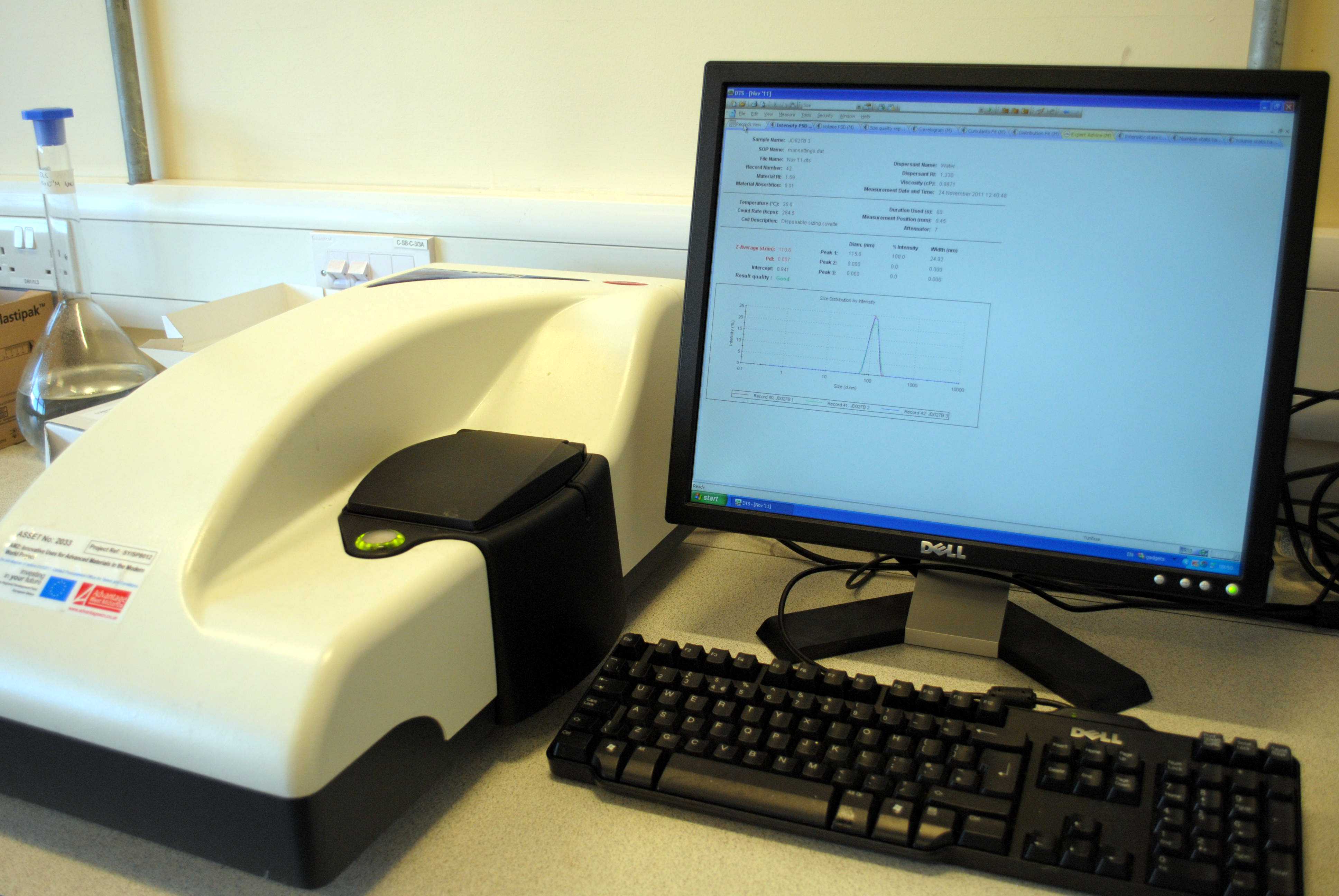

The concentration of virus nanoparticles can be calculated based on the two measured scattered light intensities by knowing the refractive index of the dispersing solution, of the polymer and virus nanoparticles as well as their relative sphere equivalent diameters. Measuring the intensity of the light scattered by polymeric nanoparticles of known concentration and comparable size with the investigated virus particle. Measuring the intensity of the light scattered by viruses suspended in an aqueous solution.

The method is especially relevant for preparation of virus particle concentration standards and to vaccine formulations based on attenuated or inactivated virus particles where the classical plaque forming assays cannot be applied. Further limitations may arise if the refractive index of the virus is unavailable or cannot be calculated based on its composition, such as in case of enveloped viruses. 1/10th of the wavelength of the scattered monochromatic light (∼70 nm diameter). Beckman Coulter has launched a unique data analysis system for the clinical. The method is applicable for virus particles acting as Rayleigh scatterers, i.e., virus particles with equivalent diameters up to ca. Software That Supports The Regulatory Needs In Your Clinical Cytometry Lab. Instead, as standards, well-characterized polymeric nanoparticle solutions are used. We have adapted a static light scattering based method for the quantification of virus particles (shown for poliovirus) without the need of virus particle standards. Most often the determination of the concentration of virus particles is rendered difficult by the availability of proper standards.


 0 kommentar(er)
0 kommentar(er)
